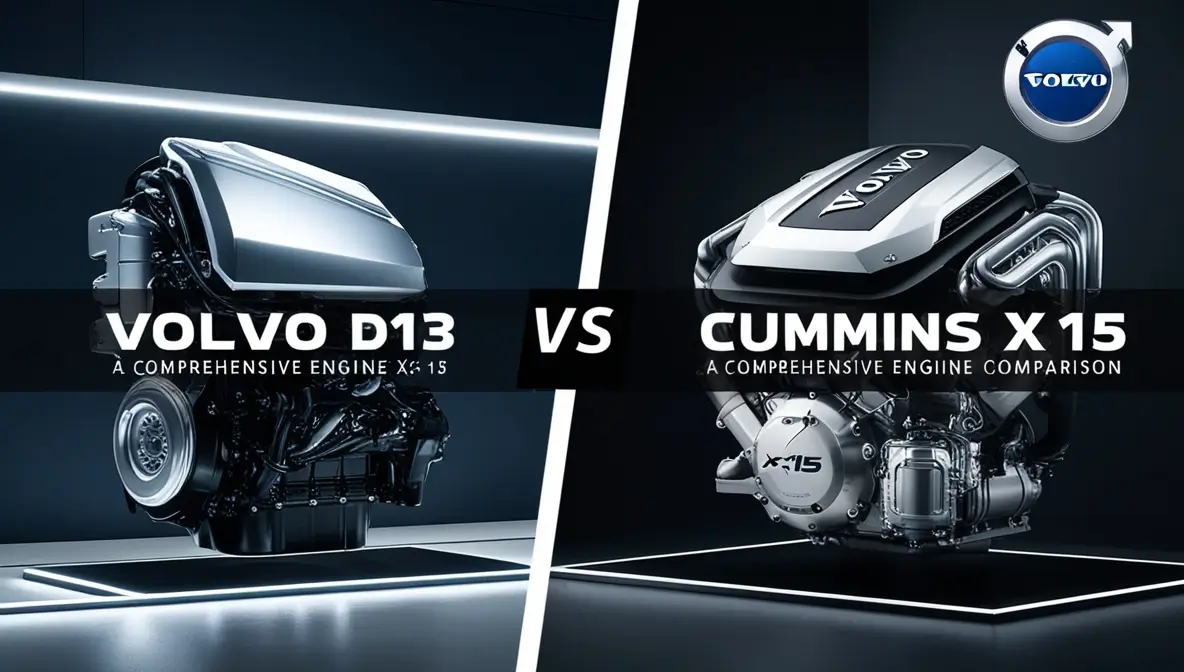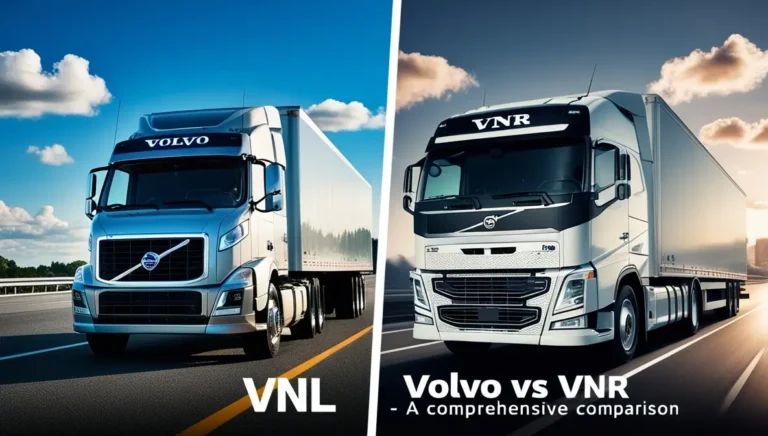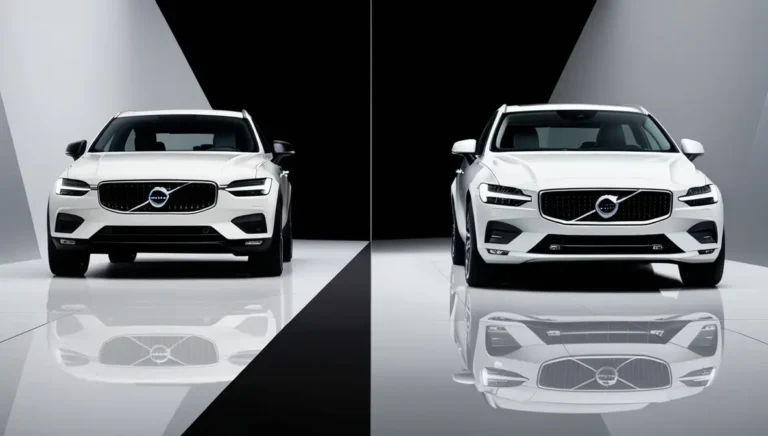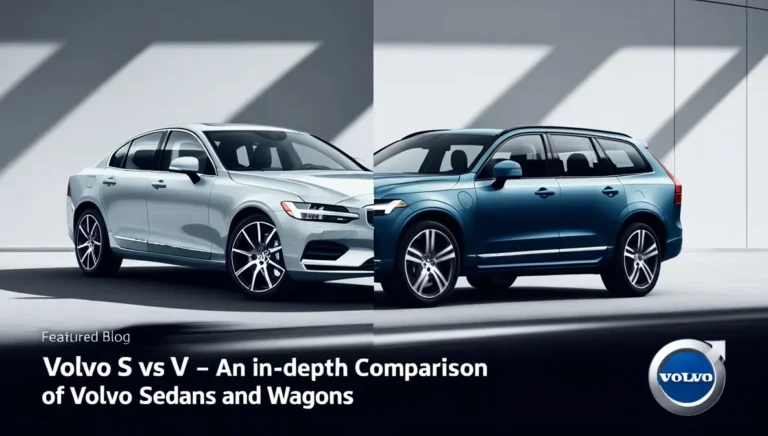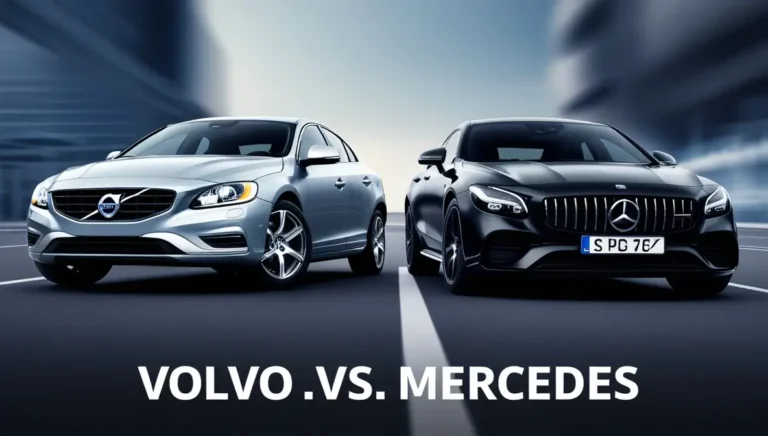Volvo D13 vs Cummins X15: A Comprehensive Comparison
You’re standing at a crossroads, quite literally, between two titans of the trucking world. In one corner, the sophisticated Volvo D13 flexes its Swedish engineering muscles. On the other, the rugged Cummins X15 shows off its American might. Which heavyweight champion deserves your hard-earned money? Let’s dive into this epic showdown!
Want a quick answer? The Volvo D13 shines in fuel efficiency and modern technology integration, making it ideal for fleet operators focused on fuel savings and regular routes. The Cummins X15, however, takes the crown for raw Power and durability, which makes it perfect for heavy-haul operations and challenging terrains. But there’s so much more to this story!
Before we dive deeper, remember that your specific needs trump general recommendations. Think about your area’s primary routes, typical loads, and maintenance infrastructure.
Overview of Volvo D13 and Cummins X15 Engines
Volvo D13 Engine Features and Specifications
Let me tell you about when I first encountered a Volvo D13 at a trucking show in Dallas. The engineer’s eyes lit up when showing me the engine, and for good reason! This 12.8-liter powerhouse packs quite a punch.
Key Specifications:
- Displacement: 12.8 liters
- Horsepower Range: 375-500 HP
- Peak Torque: 1450-1850 lb-ft
- Weight: 2,605 lbs
| Feature | Benefit |
| Wave Piston Design | 2% better fuel efficiency |
| Common Rail Fuel System | Precise fuel delivery |
| I-Shift Integration | Smoother gear changes |
Fun Fact: The D13’s wave piston design isn’t just clever engineering – it’s inspired by how waves move in nature. Talk about thinking outside the box!
One of the coolest features of the D13 is its turbo-compound technology. Think of it as a double-scoop ice cream cone of Power using exhaust gases twice! First, it is for the regular turbo, then again, to recover even more energy. Pretty neat, right?
Cummins X15 Engine Features and Specifications
The Cummins X15 feels like the engine equivalent of your favorite work boots – reliable, powerful, and ready for anything. This 14.9-liter beast means business.
Key Specifications:
- Displacement: 14.9 liters
- Horsepower Range: 400-605 HP
- Peak Torque: 1450-2050 lb-ft
- Weight: 2,961 lbs
Pro Tip: The X15’s larger displacement doesn’t always mean higher fuel consumption – it’s all about how you spec it for your application.
The X15’s XPI fuel system is like having a professional marksman handling your fuel delivery – it’s that precise. Each injection is timed perfectly, helping squeeze every mile possible out of each gallon of diesel.
Advanced Technologies:
- Variable Geometry Turbocharger
- Single-module after-treatment system
- ADEPT predictive cruise control
Did you know? The X15’s block is so robust that some units have logged over 1.5 million miles without a major overhaul. Now that’s what I call staying Power!
Performance Comparison: Power and Torque
Horsepower Comparison
Remember that feeling when you first floored the pedal in a powerful truck? That’s what we’re talking about here. Both engines bring serious muscle to the table but flex it differently.
Volvo D13 Power Profile:
- Sweet spot: 425-450 HP range
- Optimal for regional hauls
- Excels in fuel economy mode
- Perfect balance for 80,000 lb loads
The D13 reminds me of a marathon runner – lean, efficient, and ready to go the distance. I once rode with a fleet operator in Colorado who switched his entire fleet to D13s. “It’s not about the peak power,” he told me, “it’s about how it uses that power.”
Cummins X15 Power Profile:
- Heavy-hitter: 450-605 HP range
- Dominates in heavy-haul scenarios
- Maintains Power at high altitudes
- Comfortable with 100,000+ lb loads
Real-World Insight: During a recent mountain pass run, a veteran driver showed me how the X15 maintained steady Power at 11,000 feet elevation. “This beast doesn’t even break a sweat,” he grinned.
Torque and Responsiveness
Let’s talk torque – the real muscle behind your haul. Think of horsepower as speed, but torque? That’s your climbing and pulling Power.
D13 Torque Characteristics:
- Peak torque: 1850 lb-ft
- Quick response at lower RPMs
- Smooth power delivery
- Great for urban stop-and-go
X15 Torque Delivery:
- Monster torque: up to 2050 lb-ft
- Brutal pulling power
- Steady torque curve
- King of the mountains
Fun Fact: The difference in torque between these engines (200 lb-ft) is about the same as the entire torque output of some passenger cars!
Fuel Efficiency and Cost Savings
Fuel Economy Comparison
Now, let’s talk about everyone’s favorite topic – fuel savings! I’ve crunched numbers from real fleet data, and the results might surprise you.
D13 Fuel Efficiency Features:
- Turbo compound technology saves 3-5%
- Wave piston design adds 2% efficiency
- I-Shift integration optimizes gear selection
- Average MPG: 7.5-8.2 (loaded)
| Driving Condition | D13 MPG | X15 MPG |
| Flat Highway | 8.2 | 7.9 |
| Urban | 7.3 | 7.0 |
| Mountains | 6.8 | 7.1 |
Money-Saving Tip: Calculate your annual fuel savings using this formula: (Miles per year ÷ MPG difference) × diesel price = yearly savings
X15 Fuel Saving Technologies:
- ADEPT predictive cruise
- Smart coasting features
- XPI fuel system precision
- Average MPG: 7.2-7.9 (loaded)
Cost of Ownership
Let’s get real about your wallet. These engines aren’t cheap, but their value shows up differently.
Initial Investment and Returns:
- D13 typically costs $2,000-3,000 less upfront
- X15 often has a better resale value
- Both offer extended warranty options
- Maintenance intervals affect the total Cost
Picture this: You’re not just buying an engine but investing in your business’s future. One owner-operator I know paid off the price difference of his X15 in just 14 months through better reliability on his heavy-haul routes.
Maintenance Breakdown:
- D13: Oil changes every 35,000-45,000 miles
- X15: Oil changes every 40,000-50,000 miles
- D13: Lower parts Cost, more specialized service
- X15: Higher parts cost, wider service network
Smart Planning: Keep a maintenance fund of about $0.03-0.05 per mile for either engine. Better to have it and not need it than the other way around!
Remember when I mentioned my friend in Colorado? His fleet’s fuel logs showed something interesting: The D13’s efficiency advantage narrowed significantly in mountain operations, while the X15 showed consistent performance across all terrains.
Durability and Reliability of Each Engine
Durability Features
Let’s talk about staying Power – because breakdowns are about as welcome as a skunk at a garden party. Both engines are built tough, but they approach durability differently.
D13’s Built-to-Last Features:
- One-piece cast iron block
- Precision-machined cylinder linings
- Forged steel crankshaft
- High-strength pistons with cooling jets
I recently chatted with a fleet manager in Texas who’s running D13s past the million-mile mark. His secret? “Follow the maintenance schedule like it’s religion,” he said with a wink.
X15’s Tough-as-Nails Design:
- Stronger cylinder block
- Single-piece steel piston design
- Dual overhead camshafts
- Larger bearing surfaces
Maintenance Pro Tip: Keep detailed records of your oil analysis. It’s like getting a regular health checkup for your engine!
Maintenance Needs and Common Issues
Nobody likes surprises on the road – unless it’s finding an empty highway during rush hour! Let’s break down what you might face with each engine.
D13 Common Issues:
- EGR valve cleaning is needed more frequently
- Aftertreatment system sensitivity
- Turbo compound system maintenance
- Software updates importance
X15 Watch Points:
- PDF cleaning intervals
- Higher oil consumption in some cases
- Fuel injector maintenance
- Turbo actuator checks
Fun Fact: Airline engine maintenance programs inspired the D13’s maintenance intervals. Talk about aiming high!
Environmental Impact and Emissions
Emission Control Technologies
Going green isn’t just about saving polar bears – it’s also about saving green in your wallet! Both engines tackle emissions differently.
D13’s Green Features:
- Advanced SCR system
- Improved EGR design
- Low-ash oil compatibility
- Up to B20 biodiesel ready
X15’s Clean Technology:
- Single module after treatment
- Enhanced combustion efficiency
- Smart diagnostic systems
- Reduced complexity design
Green Tip: Running on B20 biodiesel? Both engines handle it well, but watch those fuel filters more closely!
Fuel Type and Environmental Compatibility
Think of these engines as picky eaters – they perform best when you feed them right. Let’s talk fuel compatibility.
Recommended Fuels Table:
| Fuel Type | D13 | X15 |
| Ultra-Low Sulfur | Excellent | Excellent |
| Biodiesel B20 | Good | Very Good |
| Biodiesel B100 | Not Recommended | Not Recommended |
| Natural Gas | N/A | Available (ISX12 N) |
User Experience and Feedback from Industry Experts
Driver Experiences with Volvo D13
After logging thousands of miles behind D13-powered rigs, drivers have plenty to say. Here’s the real-world scoop.
What Drivers Love:
- Quiet operation
- Smooth power delivery
- Excellent cruise control
- Fuel efficiency feedback
“It’s like driving a luxury car,” said one owner-operator I met at a truck stop. “Except this luxury car can pull 80,000 pounds!”
Driver Experiences with Cummins X15
The X15 has its fan club, and they’re not shy about singing its praises.
Driver Highlights:
- Raw pulling power
- Reliable performance
- Strong engine brake
- Traditional feel
I remember a conversation with a veteran driver in the Rockies: “This X15 pulls like a freight train and sounds like one, too – in the best way possible!”
Road-Tested Wisdom: Both engines perform best when matched to your specific application. A fuel-efficient D13 might cost you more in the mountains, while an X15 might be overkill for local routes.
Total Cost of Ownership Comparison
Initial Cost of Each Engine
Let’s talk money – because your truck needs to make you money at the end of the day, not just look pretty at truck stops!
Purchase Price Breakdown:
- D13 base price: $35,000-$40,000
- X15 base price: $38,000-$43,000
- Installation costs: Similar for both
- Warranty options: Comparable coverage
I recently helped a small fleet owner crunch these numbers. His lightbulb moment? “It’s not just about the sticker price – it’s about what happens after you start the engine.”
Smart Money Tip: Look beyond the price tag! A $3,000 difference in purchase price works out to just $50 per month over a 5-year loan.
Investment Analysis Table:
| Cost Factor | Volvo D13 | Cummins X15 |
| Base Price | Lower | Higher |
| Fuel Costs | Lower | Moderate |
| Maintenance | Moderate | Lower |
| Resale Value | Good | Excellent |
Maintenance Costs Over Time
Here’s where the rubber meets the road – your ongoing costs over five years.
Five-Year Maintenance Snapshot:
- D13 average yearly Cost: $3,500-$4,500
- X15 average yearly Cost: $4,000-$5,000
- D13 parts availability: Good
- X15 parts availability: Excellent
Fun Fact: The difference in maintenance costs between these engines often equals the price of a good vacation – or a bad breakdown!
Choosing Between Volvo D13 and Cummins X15: Final Recommendations
Best Fit for Heavy-Duty Hauling
Let’s match these engines to their sweet spots because using the wrong tool for the job is like trying to cut a steak with a spoon!
D13 Ideal Applications:
- Regional hauls
- Weight-sensitive operations
- Fuel economy priority
- Consistent routes
X15 Perfect Scenarios:
- Heavy-haul operations
- Mountain routes
- High-mileage runs
- Severe duty applications
Real Talk: A Florida fleet manager told me, “My D13s are perfect for our flat-land runs, but I wouldn’t trade my X15s for mountain routes.”
Best Fit for Long-Haul Efficiency
Time to talk efficiency – because every drop of diesel counts when you’re counting miles by the million.
Long-Haul Performance Factors:
- D13 shines in steady-state cruising
- X15 excels in varied terrain
- D13 is better in congested areas
- X15 is stronger in adverse conditions
Final Decision Factors
Here’s your decision-making cheat sheet – sometimes, you must see everything simultaneously!
Choose the D13 if:
- Fuel economy is your top priority
- You run mostly highway miles
- Your loads stay under 80,000 lbs
- You have good Volvo service access
Pick the X15 if:
- Power is paramount
- You haul heavy loads regularly
- You need maximum reliability
- You want wider service options
Final Pro Tip: Test drive both if possible. No amount of reading beats hands-on experience!
Decision Matrix Table:
| Factor | D13 Wins | X15 Wins | It’s a Tie |
| Fuel Economy | ✓ | ||
| Raw Power | ✓ | ||
| Service Network | ✓ | ||
| Initial Cost | ✓ | ||
| Resale Value | ✓ | ||
| Warranty | ✓ |
The Bottom Line? There’s no universal “best” engine – just the best engine for YOUR needs. Think of it like choosing a business partner. The D13 is like the efficiency expert who helps you save every penny, while the X15 is the powerhouse that never backs down from a challenge.
Remember my friend in Colorado? He runs both engines – D13s for his regional fleet and X15s for his mountain routes. “It’s not about which engine is better,” he says, “it’s about which engine is better for you.”
Parting Thought: Whatever engine you choose, remember that regular maintenance and proper operation are the keys to long-term success. The best engine in the world won’t save you from bad maintenance habits!

